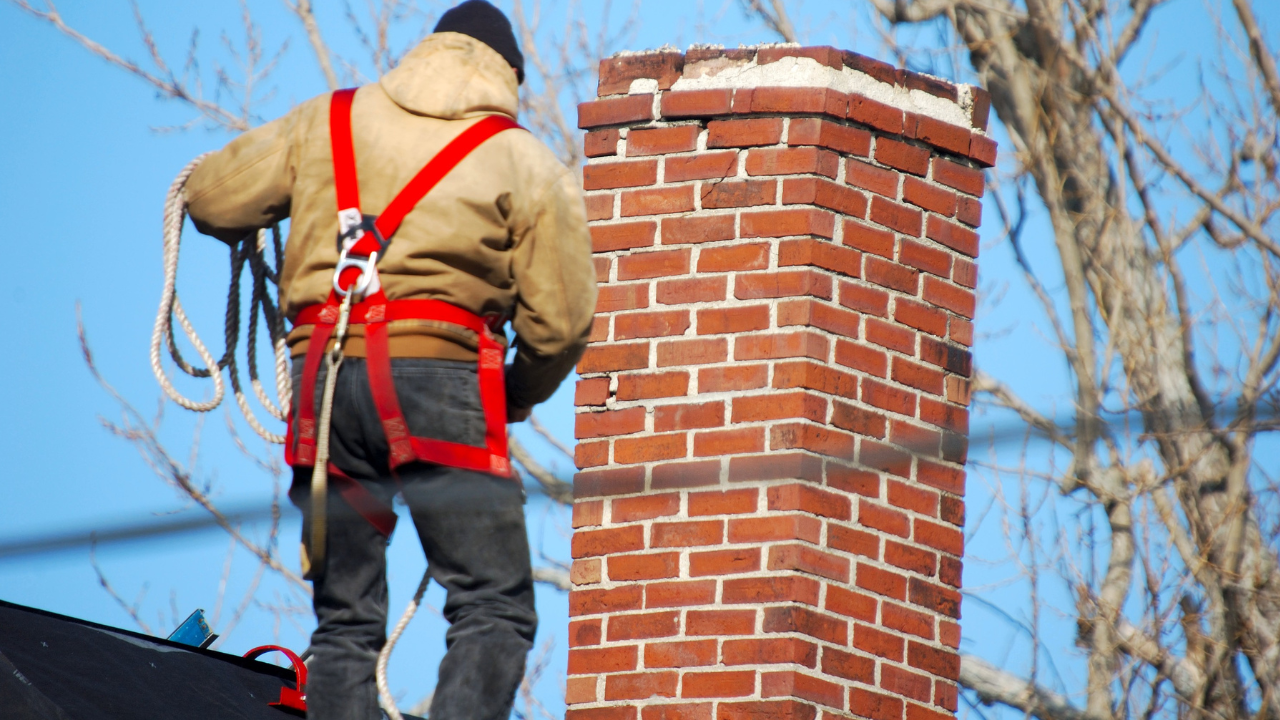A chimney liner is one of the most important parts of your home’s heating and ventilation system. It keeps your chimney safe, improves efficiency, and prevents dangerous gases from entering your home. Many homeowners wonder how professionals install chimney liners and what steps are involved in the process.
In this detailed guide, we’ll explain how chimney liners are installed, the tools used, and why hiring professionals like AAA Air Duct Cleaning is the safest choice.
What Is a Chimney Liner?
A chimney liner is a tube or layer installed inside your chimney to protect its walls from heat, moisture, and corrosion. It acts as a shield between the chimney’s masonry and the hot exhaust gases produced by your fireplace, furnace, or stove.
Without a proper liner, your chimney can deteriorate over time, leading to cracks, smoke leaks, or even fire hazards. That’s why choosing to install a chimney liner is essential for safety and performance.
There are three main types of chimney liners:
- Clay Tile Liners – Common in traditional homes. Durable but can crack under heat stress.
- Metal Liners – Made from stainless steel or aluminum; great for both gas and wood-burning systems.
- Cast-in-Place Liners – A cement-like material that forms a seamless protective layer inside the flue.
Why Installing a Chimney Liner Is Important
If your chimney doesn’t have a proper liner, you could face several issues, including poor air flow and safety hazards. Here are the key benefits of installing a chimney liner:
- Protects Masonry: The liner prevents heat and acidic gases from damaging the chimney walls.
- Improves Draft: A properly sized liner enhances air movement, making your fireplace more efficient.
- Prevents Fire Hazards: Reduces the risk of chimney fires caused by cracks or creosote buildup.
- Reduces Carbon Monoxide Leaks: Keeps harmful gases from entering your living spaces.
Companies like AAA Air Duct Cleaning specialize in ventilation and chimney services that ensure your liner is installed safely and performs efficiently.
Step-by-Step Process: How to Install a Chimney Liner
Installing a chimney liner is not a simple DIY project. It requires precision, safety tools, and professional expertise. Below is the general process that chimney specialists follow when installing a liner:
1. Chimney Inspection
The first step in any liner installation is a detailed inspection. Professionals use cameras and diagnostic tools to check the flue for cracks, blockages, or creosote buildup.
AAA Air Duct Cleaning performs a full system check to ensure the chimney and connected ducts are in proper condition before installation begins.
2. Selecting the Right Liner
After inspection, the technician determines the correct type and size of the liner based on your appliance and chimney dimensions.
- Clay liners work well for new constructions.
- Stainless steel liners are ideal for retrofit projects.
- Aluminum liners are used for gas appliances.
- Cast-in-place liners are recommended for older brick chimneys needing extra stability.
Choosing the correct size ensures efficient airflow and safe operation.
3. Cleaning the Chimney Flue
Before installing the new liner, the flue must be cleaned thoroughly. Professionals remove soot, creosote, and debris using rotary brushes and vacuums.
This step is crucial. A dirty flue can block installation and reduce liner efficiency. That’s why many homeowners pair liner installation with AAA Air Duct Cleaning’s vent cleaning services for complete system maintenance.
4. Preparing the Liner
The chosen liner is measured and cut according to the chimney’s height. For metal liners, insulation wraps are added around the liner to protect against heat loss and condensation.
Technicians attach the necessary fittings, including the bottom connector and top plate, before lowering it into the chimney.
5. Installing the Liner
The liner is lowered carefully from the top of the chimney. For metal liners, this involves feeding a flexible or rigid pipe down through the chimney until it reaches the appliance connection point.
If using a cast-in-place liner, the technician inserts an inflatable tube into the flue and fills the space around it with a cement-like mixture. Once the material hardens, the tube is removed, leaving a smooth, durable liner.
This stage requires precision to ensure no gaps or bends that could obstruct airflow.
6. Connecting the Liner
After the liner is positioned correctly, it’s connected to the heating appliance or fireplace. The joints are sealed with heat-resistant materials to prevent leaks.
This connection ensures all smoke and gases exit directly through the liner, keeping your home safe and your heating system efficient.
7. Securing and Sealing the Chimney Cap
The top of the liner is fastened with a top plate and a chimney cap. This cap prevents rain, leaves, and animals from entering the flue.
A properly sealed top also prevents moisture from seeping into the liner, extending its lifespan.
8. Testing and Final Inspection
Finally, professionals conduct a performance test to check for proper draft and gas flow. This ensures the liner is installed correctly and the chimney is working efficiently.
AAA Air Duct Cleaning technicians also perform a final safety check, verifying that all ducts and vents are free from blockages.
How Long Does It Take to Install a Chimney Liner?
The time needed to install a chimney liner depends on the chimney’s size and condition. On average, the process takes between 4 to 8 hours.
Older chimneys may require additional repairs, extending the timeline slightly. Scheduling an inspection beforehand helps estimate time and cost more accurately.
Common Signs You Need a New Chimney Liner
Knowing when to replace your chimney liner is just as important as installing one. Watch for these warning signs:
- Cracked or missing clay tiles
- Rust stains near the fireplace
- Unusual smoke or odor indoors
- Poor draft or weak fire
- White stains on exterior bricks (a sign of moisture)
If you notice any of these, contact AAA Air Duct Cleaning for a professional inspection. Their team can determine if a liner replacement or cleaning is needed.
The Cost of Chimney Liner Installation
Costs vary based on material and chimney size, but here’s a general idea:
- Clay liners: $1,500 – $3,000
- Metal liners: $2,000 – $4,000
- Cast-in-place liners: $3,500 – $5,000
Although it’s an investment, a properly installed liner can last for decades, providing long-term safety and efficiency.
Why Hire AAA Air Duct Cleaning for Chimney Liner Installation
While it might be tempting to install a chimney liner yourself, professional installation ensures safety, compliance, and lasting performance.
Here’s why homeowners trust AAA air duct cleaning:
- Certified and trained technicians
- Use of high-quality, durable materials
- Advanced inspection and vent cleaning tools
- Affordable pricing with transparent quotes
- Comprehensive chimney and duct cleaning services
AAA Air Duct Cleaning doesn’t just focus on chimneys. Their team also cleans air ducts, dryer vents, and HVAC systems, keeping your entire home’s air clean and safe.
Final Thoughts
Understanding how chimney liners are installed helps you appreciate the expertise required to ensure safety and efficiency. A properly installed liner improves heating performance, reduces fire risk, and protects your home from harmful gases.
Whether you’re upgrading an old system or adding a liner to a new chimney, trust professionals like AAA Air Duct Cleaning. Their experience in install chimney liner services and home ventilation makes them the perfect choice for reliable, long-term protection.




